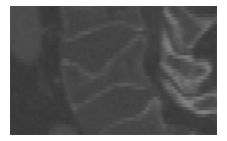Overview
Introduction
[Next: Vertebral Fractures]
Accurate analysis of the spine and spinal structures from medical images is an essential tool in many clinical applications of spinal imaging. Knowledge of the detailed shape of individual vertebrae can considerably aid early diagnosis, surgical planning and follow-up assessment of a number of spinal pathologies, such as degenerative disorders, spinal deformities, trauma and tumors, as well as for the evaluation of vertebral fractures. Segmentation and classification of fractured vertebrae by computer-assisted techniques may therefore provide additional support to diagnosis and treatment of vertebral fractures.
The goal of the computational challenge on Segmentation and Classification of Fractured Vertebrae () is to bring together researchers who are interested in the spinal imaging and image analysis, validate the performance of their existing or newly developed algorithms on the same standard database of images with vertebral fractures, and provide a standardized evaluation framework for segmentation and classification results comparison and ranking.
Vertebral Fractures
[Previous: Introduction] [Next: The Challenge]
Vertebral Fractures
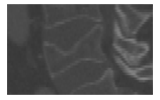 A vertebral fracture is observed as a collapse of the vertebra that occurs due to conditions such as osteoporosis, excessive pressure, or trauma. Radiography of the thoracolumbar spine is the standard imaging approach for evaluating vertebral fractures in clinical practice, however, visual interpretation of vertebral body deformations from two-dimensional (2D) radiographic images is a challenging task due to the projective nature of images and variability in the shape of both normal and pathologically deformed vertebral bodies. Vertebral fractures are therefore often undetected by clinicians or under-diagnosed by radiologists. As both over-diagnosis and under-diagnosis may have clinically serious consequences for individual subjects, radiologists have to be well-trained and with long-term clinical experience to provide a successful visual interpretation and correct diagnosis of vertebral body deformations. To reduce the subjectivity in interpretation and improve the agreement among observers, quantitative morphometry (QM) and semiquantitative (SQ) methods were proposed and extended to computerized evaluation of vertebral fractures, often supported by image processing and analysis techniques. On the other hand, by generating detailed 3D images of the anatomy, computed tomography (CT) provides means for accurate measurement of vertebral deformations in three dimensions (3D). Segmentation of fractured vertebrae in 3D may provide additional support to surgical treatment of vertebral fractures, for example, to measure the volume of the vertebral body in the case of vertebroplasty, while the detection and classification of vertebral fractures may provide support to clinical practice, and to research and understanding of vertebral fractures. Although the application in 3D may not compensate for additional costs and patient exposure to ionizing radiation in the case of CT imaging, the benefits of an accurate diagnosis outweigh the associated risks, and CT imaging of the spine is frequently performed to accurately measure bone density in the spine and predict whether vertebral fractures are likely to occur in patients who are at risk of osteoporosis.
A vertebral fracture is observed as a collapse of the vertebra that occurs due to conditions such as osteoporosis, excessive pressure, or trauma. Radiography of the thoracolumbar spine is the standard imaging approach for evaluating vertebral fractures in clinical practice, however, visual interpretation of vertebral body deformations from two-dimensional (2D) radiographic images is a challenging task due to the projective nature of images and variability in the shape of both normal and pathologically deformed vertebral bodies. Vertebral fractures are therefore often undetected by clinicians or under-diagnosed by radiologists. As both over-diagnosis and under-diagnosis may have clinically serious consequences for individual subjects, radiologists have to be well-trained and with long-term clinical experience to provide a successful visual interpretation and correct diagnosis of vertebral body deformations. To reduce the subjectivity in interpretation and improve the agreement among observers, quantitative morphometry (QM) and semiquantitative (SQ) methods were proposed and extended to computerized evaluation of vertebral fractures, often supported by image processing and analysis techniques. On the other hand, by generating detailed 3D images of the anatomy, computed tomography (CT) provides means for accurate measurement of vertebral deformations in three dimensions (3D). Segmentation of fractured vertebrae in 3D may provide additional support to surgical treatment of vertebral fractures, for example, to measure the volume of the vertebral body in the case of vertebroplasty, while the detection and classification of vertebral fractures may provide support to clinical practice, and to research and understanding of vertebral fractures. Although the application in 3D may not compensate for additional costs and patient exposure to ionizing radiation in the case of CT imaging, the benefits of an accurate diagnosis outweigh the associated risks, and CT imaging of the spine is frequently performed to accurately measure bone density in the spine and predict whether vertebral fractures are likely to occur in patients who are at risk of osteoporosis.
Evaluation of Vertebral Fractures
 To evaluate vertebral fractures, quantitative morphometry (QM) methods were designed that [1-4] apply the standard six-point vertebral morphometry to sagittal radiographic images, which consists of manual placement of six points on the corners of vertebral bodies and at the centers of vertebral endplates. From these points, the anterior, central and posterior vertebral body heights are measured and used to calculate the anterior-to-posterior, central-to-posterior and posterior-to-posterior-adjacent height ratios (the latter is calculated if the posterior height of the superior- or inferior-adjacent vertebral body is available). To distinguish vertebral fractures from various deformations that normally occur in healthy subjects, the obtained heights and height ratios are then compared to their normative values. Despite the relatively objective nature of QM methods, manual measurement of vertebral body heights is time-consuming, and even a relatively small measurement imprecision may have a considerable impact on the classification of vertebral body deformations. In clinical practice, radiologists prefer visual estimation of the loss in vertebral body heights over manual measurement of vertebral body heights. As a result, the semiquantitative (SQ) method of Genant et al. [5], which introduced specific morphological cases and grades of vertebral body fractures, is accepted as the “ground truth” for the evaluation of vertebral fractures. By estimating the anterior, central and posterior height of the vertebral body in sagittal radiographic images, the SQ method defines the following morphological cases of vertebral fractures:
To evaluate vertebral fractures, quantitative morphometry (QM) methods were designed that [1-4] apply the standard six-point vertebral morphometry to sagittal radiographic images, which consists of manual placement of six points on the corners of vertebral bodies and at the centers of vertebral endplates. From these points, the anterior, central and posterior vertebral body heights are measured and used to calculate the anterior-to-posterior, central-to-posterior and posterior-to-posterior-adjacent height ratios (the latter is calculated if the posterior height of the superior- or inferior-adjacent vertebral body is available). To distinguish vertebral fractures from various deformations that normally occur in healthy subjects, the obtained heights and height ratios are then compared to their normative values. Despite the relatively objective nature of QM methods, manual measurement of vertebral body heights is time-consuming, and even a relatively small measurement imprecision may have a considerable impact on the classification of vertebral body deformations. In clinical practice, radiologists prefer visual estimation of the loss in vertebral body heights over manual measurement of vertebral body heights. As a result, the semiquantitative (SQ) method of Genant et al. [5], which introduced specific morphological cases and grades of vertebral body fractures, is accepted as the “ground truth” for the evaluation of vertebral fractures. By estimating the anterior, central and posterior height of the vertebral body in sagittal radiographic images, the SQ method defines the following morphological cases of vertebral fractures:
- Wedge
- The wedge (anterior) morphological case of vertebral fractures is characterized by a distinctive difference between the anterior and posterior vertebral height.
- Biconcavity
- The biconcavity (middle) morphological case of vertebral fractures is characterized by similar anterior and posterior but a smaller central vertebral height.
- Crush
- The crush (posterior) morphological case of vertebral fractures is characterized by the mean vertebral height lower than the statistical value for that vertebra or for adjacent vertebral bodies.
Moreover, the SQ method defines the following morphological grades of vertebral fractures:
- Mild
- The mild (1) morphological grade of vertebral fractures is characterized by a 20–25% reduction in the vertebral height.
- Moderate
- The moderate (2) morphological grade of vertebral fractures is characterized by a 25–40% reduction in the vertebral height.
- Severe
- The severe (3) morphological grade of vertebral fractures is characterized by an over 40% reduction in the vertebral height.
| Wedge case (1) [anterior] |
Biconcavity case (2) [middle] |
Crush case (3) [posterior] |
|
|---|---|---|---|
Mild grade (1) [20% - 25%] |
 |
 |
 |
Moderate grade (2) [25% - 40%] |
 |
 |
 |
Severe grade (3) [> 40%] |
 |
 |
 |
The Challenge
[Previous: Vertebral Fractures]
In the past decade, computational challenges have become an integral part of the medical imaging community, and regularly organized events within the Medical Image Computing and Computer-Assisted Intervention - MICCAI and International Symposium on Biomedical Imaging - ISBI conferences.
Computational challenges in the field of spine medical image analysis have already been successfully organized within the dedicated annual MICCAI satellite event. The 2nd MICCAI Workshop & Challenge on Computational Methods and Clinical Applications for Spine Imaging - MICCAI-CSI2014 hosted two challenges on “Spine and Vertebrae Segmentation” and “Vertebrae Localization and Identification”, and the 3rd MICCAI Workshop & Challenge on Computational Methods and Clinical Applications for Spine Imaging - MICCAI-CSI2015 hosted two challenges on “Automatic Vertebral Fracture Analysis and Identification from VFA by DXA” and “Automatic Intervertebral Disc Localization and Segmentation from 3D T2 MRI Data”.
The challenge builds on the two previous challenges, “Spine and Vertebrae Segmentation” from MICCAI-CSI2014 and “Automatic Vertebral Fracture Analysis and Identification from VFA by DXA” from MICCAI-CSI2015. However, while the former challenge targeted healthy vertebrae in CT images and the latter challenge targeted fractured vertebrae in DXA images, the challenge can be considered as successor of these two challenges as it targets fractured vertebrae in CT images. The goal of the challenge is therefore to:
- bring together researchers who are interested in spinal imaging and image analysis, especially in vertebra segmentation and fracture classification problems,
- validate the performance of their existing or newly developed algorithms on the same standard database of clinical images with vertebral fractures,
- provide a standardized evaluation framework for vertebra segmentation and fracture classification results comparison and ranking.
The challenge is supported by the SpineWeb, an online collaborative platform for everyone interested in research on spinal imaging and image analysis, and registered with the Grand Challenges in biomedical image analysis.
- H. Minne, G. Leidig, C. Wuster, L. Siromachkostov, G. Baldauf, R. Bickel, P. Sauer, M. Lojen, R. Ziegler R.: A newly developed spine deformity index (SDI) to quantitate vertebral crush fractures in patients with osteoporosis. Bone and Mineral 3(4):335–349, 1988 & Maturitas 10(3):248, 1988 [full text]
- L. Melton, S.H. Kan, M.A. Frye, H.W. Wahner, W.M. O’Fallon, B.L. Riggs.: Epidemiology of vertebral fractures in women. American Journal of Epidemiology, 129(5):1000–1011, 1989 [full text]
- R. Eastell, S.L. Cedel, H.W. Wahner, B.L. Riggs, L.J. Melton: Classification of vertebral fractures. Journal of Bone and Mineral Research 6(3):207–215, 1991 [doi: 10.1002/jbmr.5650060302]
- E.V. McCloskey, T.D. Spector, K.S. Eyres, E.D. Fern, N. O’Rourke, S. Vasikaran, J.A. Kanis: The assessment of vertebral deformity: a method for use in population studies and clinical trials. Osteoporosis International 3(3):138–147, 1993 [doi: 10.1007/BF01623275]
- H.K. Genant, C.Y. Wu, C. van Kuijk, M.C. Nevitt.: Vertebral fracture assessment using a semiquantitative technique. Journal of Bone and Mineral Research, 8(9):1137–1148, 1993 [doi: 10.1002/jbmr.5650080915]


